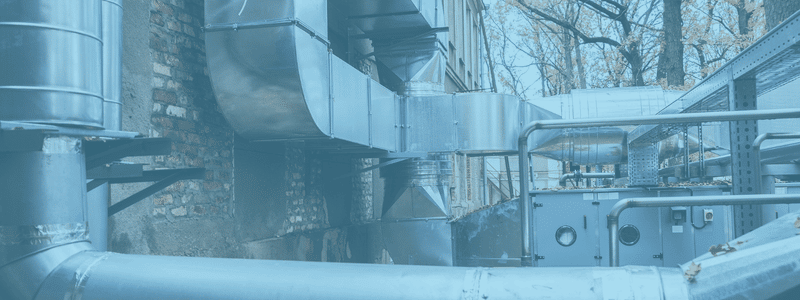Air conditioning might be part of the HVAC acronym, but not all AC is part of an HVAC system. HVAC usually involves the central air conditioning of a building, while air conditioning in general also can refer to individual AC units that cool a single room or unit. It might seem the difference between the two should be obvious, but the terms “central air conditioning” and “air conditioner” often are used interchangeably, which can lead to confusion.
So, what exactly is central air conditioning, and how is it different from an individual AC unit? Which is better, and in what environments? Read on to learn more about central AC.


What’s the Difference Between Central Air Conditioning and an AC Unit?
Most buildings can be cooled with either a central air conditioner or a room air conditioner, but that doesn’t mean both are good options for every property. Which type of air conditioner most effectively and efficiently cools a building depends on a variety of factors.
What is a central air conditioner? Central air conditioning describes most whole-home air conditioning systems. It replaces warm inside air with cooler air by passing it over cold coils before pushing it throughout a living space. Some central air conditioners are split systems, consisting of an indoor unit and an outdoor unit, while others are packaged systems consisting of a single outdoor unit. Because central air conditioners make use of a building’s existing ductwork, they are part of the overall HVAC system.
While central air conditioning is often preferable, it isn’t always the best option for every type of property. Room air conditioners, usually associated with window AC units, are sometimes more effective or practical for cooling and dehumidifying small spaces consisting of one or two rooms. While they are less commonly used in modern homes, room air conditioners are often used to supplement a central air conditioning system, particularly if certain rooms get a lot of direct sunlight. Room air conditioners also are used at times to cool individual units in apartment buildings.


How Does Central Air Work in an Apartment Building?
Central air is an attractive amenity for an apartment building to offer its tenants. It’s a common misconception that it’s difficult to offer central AC in an apartment complex. Still, many property owners choose not to offer the option because they consider it a luxury, or the cost to retrofit some existing buildings with ductwork is prohibitive – thus the still common appearance of window AC units outside of many older apartment buildings. A property manager might also choose to provide a mini-split air conditioner to apartment and condominium occupants, which involves indoor units installed into individual rooms and does not require ductwork or vents.
How does central air work in an apartment building? It’s not that different from how it cools a home. Warm air is drawn into the system and through ductwork to an outdoor unit that cools it by passing the air over coils chilled by refrigerant. The newly cooled air is pushed back into the building, through ductwork toward living spaces, where it is released through vents in the floors or ceilings. However, many apartment buildings and condominiums support individual control of the air in each unit, unlike single-family homes. The outdoor equipment also is often found on the rooftops of many larger apartment buildings.


Is Central Air Cheaper Than Air Conditioning?
Whether a window air conditioner or central air conditioning is the better choice depends on a variety of factors, including cost. While an individual room air conditioning unit obviously costs less to purchase and install than an HVAC-based central air conditioner, those upfront costs don’t tell the entire story. Many times, central air conditioning can cool a home more efficiently, especially in larger homes that might require several window or room AC units, so the monthly energy expenses to operate central AC will be less. Those monthly savings can add up over time and possibly exceed any savings from a window AC unit’s lower upfront cost. Installing a new central air conditioner might cost anywhere from $3,000 to more than $7,000, compared to less than $1,000 for an efficient room AC unit, but if you plan to cool more than five rooms, then a central air conditioner will offer more long-term savings.












